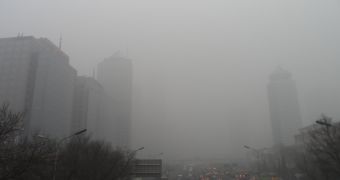Over the past few years, China has become renowned for its massive air pollution levels, exemplified by the fact that residents of its largest cities can no longer see the sun every day. In some areas of Beijing, massive screens broadcast the sunset for all those standing close enough to see.
At the beginning of 2014, authorities in China began conducting a series of greenhouse gas emission measurements, as part of a nationwide effort to curb pollution and GHG emissions, and to reduce the incidence of conditions associated with these phenomena.
Even though the most populous nation in the world is currently the largest polluter, Chinese officials are taking steps in reducing the country's emissions, and are willing to see their efforts through. The new scheme they have set up is a major step in the right direction.
Under this experimental system, more than 15,000 factories are required to report their carbon dioxide and methane emissions once every year. Sewage water emissions have to be reported once every two years. All of these data are centralized and fed into large-scale, nationwide statistics.
Most of the companies required to report emissions work in the energy generation sector. China relies heavily on burning coal for producing electricity, so these installations account for a high percentage of the country's overall emissions.
Other offenders are the chemical industry, cement manufacturers, and the iron, steel, smelting and associated industries. More than 4,000 facilities have already made their emissions levels public online.
A statement released by the Chinese Institute of Public and Environmental Affairs (IPE) recently argued that real-time air quality data were available for 179 Chinese cities starting on January 2, 2014, Our World reports.
“Residents of these cities can use their computers, and even their smart phones, to understand all the air quality information available. Real time disclosure has highlighted serious pollution, which has prompted several areas to develop emergency contingency plans for times when pollution is severe,” the statement added.
“The report calls on government, courts, enterprises, media, environmental organizations and citizens to seize the historic opportunity created by pollution source information disclosure and together push for the reduction in pollution emissions, so that the smog that hangs over Chinese cities can be dispersed as quickly as possible,” the document concluded.

 14 DAY TRIAL //
14 DAY TRIAL //